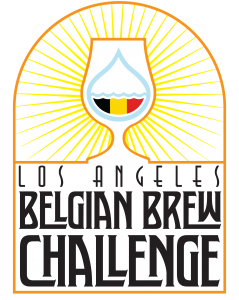http://belgianbrewchallenge.com/wp-content/uploads/sites/2/2016/03/labbc_v4_outlines-1-239x300.png
0
0
carl2
http://belgianbrewchallenge.com/wp-content/uploads/sites/2/2016/03/labbc_v4_outlines-1-239x300.png
carl22023-03-26 22:44:322023-03-27 12:09:032023 Winners Announced
http://belgianbrewchallenge.com/wp-content/uploads/sites/2/2016/03/labbc_v4_outlines-1-239x300.png
0
0
carl2
http://belgianbrewchallenge.com/wp-content/uploads/sites/2/2016/03/labbc_v4_outlines-1-239x300.png
carl22023-01-04 14:47:212023-02-15 18:48:48Welcome to the 2023 Los Angeles Belgian Brew Challenge
http://belgianbrewchallenge.com/wp-content/uploads/sites/2/2016/03/labbc_v4_outlines-1-239x300.png
0
0
Carl Townsend
http://belgianbrewchallenge.com/wp-content/uploads/sites/2/2016/03/labbc_v4_outlines-1-239x300.png
Carl Townsend2020-05-15 17:29:552023-01-04 10:56:482020 Winners Announced
http://belgianbrewchallenge.com/wp-content/uploads/sites/2/2016/03/labbc_v4_outlines-1-239x300.png
0
0
Carl Townsend
http://belgianbrewchallenge.com/wp-content/uploads/sites/2/2016/03/labbc_v4_outlines-1-239x300.png
Carl Townsend2020-01-28 18:09:412020-01-28 18:09:41Welcome to the 2020 Los Angeles Belgian Brew Challenge
http://belgianbrewchallenge.com/wp-content/uploads/sites/2/2016/03/labbc_v4_outlines-1-239x300.png
0
0
Brian Holter
http://belgianbrewchallenge.com/wp-content/uploads/sites/2/2016/03/labbc_v4_outlines-1-239x300.png
Brian Holter2015-01-14 17:45:462016-01-08 18:13:0235A - Belgian Specialty
http://belgianbrewchallenge.com/wp-content/uploads/sites/2/2016/03/labbc_v4_outlines-1-239x300.png
0
0
Brian Holter
http://belgianbrewchallenge.com/wp-content/uploads/sites/2/2016/03/labbc_v4_outlines-1-239x300.png
Brian Holter2015-01-14 17:43:312016-01-08 16:22:3328A - Brett Beer
http://belgianbrewchallenge.com/wp-content/uploads/sites/2/2016/03/labbc_v4_outlines-1-239x300.png
0
0
Brian Holter
http://belgianbrewchallenge.com/wp-content/uploads/sites/2/2016/03/labbc_v4_outlines-1-239x300.png
Brian Holter2015-01-14 17:41:132016-01-08 16:21:5026D - Belgian Dark Strong Ale
http://belgianbrewchallenge.com/wp-content/uploads/sites/2/2016/03/labbc_v4_outlines-1-239x300.png
0
0
Brian Holter
http://belgianbrewchallenge.com/wp-content/uploads/sites/2/2016/03/labbc_v4_outlines-1-239x300.png
Brian Holter2015-01-14 17:40:072016-01-08 16:20:5326C - Belgian Tripel
http://belgianbrewchallenge.com/wp-content/uploads/sites/2/2016/03/labbc_v4_outlines-1-239x300.png
0
0
Brian Holter
http://belgianbrewchallenge.com/wp-content/uploads/sites/2/2016/03/labbc_v4_outlines-1-239x300.png
Brian Holter2015-01-14 17:38:032016-01-08 16:19:5926B - Belgian Dubbel
http://belgianbrewchallenge.com/wp-content/uploads/sites/2/2016/03/labbc_v4_outlines-1-239x300.png
0
0
Brian Holter
http://belgianbrewchallenge.com/wp-content/uploads/sites/2/2016/03/labbc_v4_outlines-1-239x300.png
Brian Holter2015-01-14 17:36:352016-01-08 16:19:1326A - Trappist Single
Scroll to top
 a Belgian Tripel, an assertively strong beer but with gentle warmth and spicy phenolics. Curtis has the opportunity to brew his recipe with Tortugo Brewery as a GABF Pro-Am entry!
a Belgian Tripel, an assertively strong beer but with gentle warmth and spicy phenolics. Curtis has the opportunity to brew his recipe with Tortugo Brewery as a GABF Pro-Am entry!